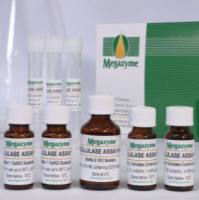Production of Microbial Glycolipids
互联网
388
Some microorganisms are able to convert preferably carbohydrates, n -alkanes (C10 to C20), and triglycerides (fatty acids of C10 to C22) into glycolipids. The carbon sources may be used separately or in combination with each other. As for biosynthetic pathways, these include both degradation and new synthesis of sugar lipids, as well as direct incorporation, elongation, or modification of precursor molecules. Reviews recently published are those of Desai and Desai (1 ) and Lang and Wagner (2 ,3 ), indicating that in general the following patterns of glycolipid production by microbial cultivation are possible:
| 1. |
Growth-associated production.
|
| 2. |
Production under growth-limiting conditions.
|
| 3. |
Production by resting cells (free or immobilized).
|









